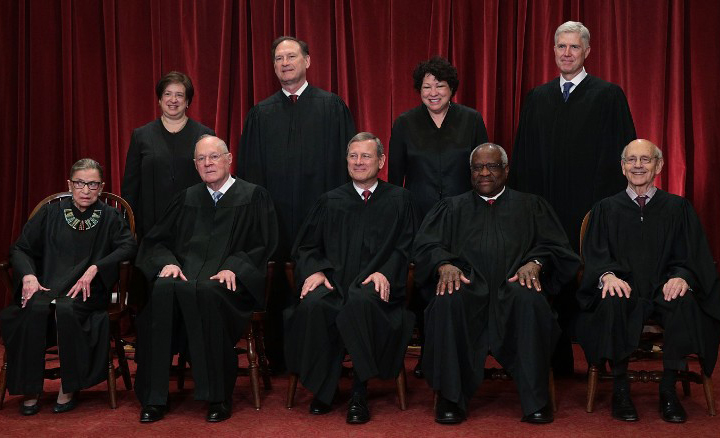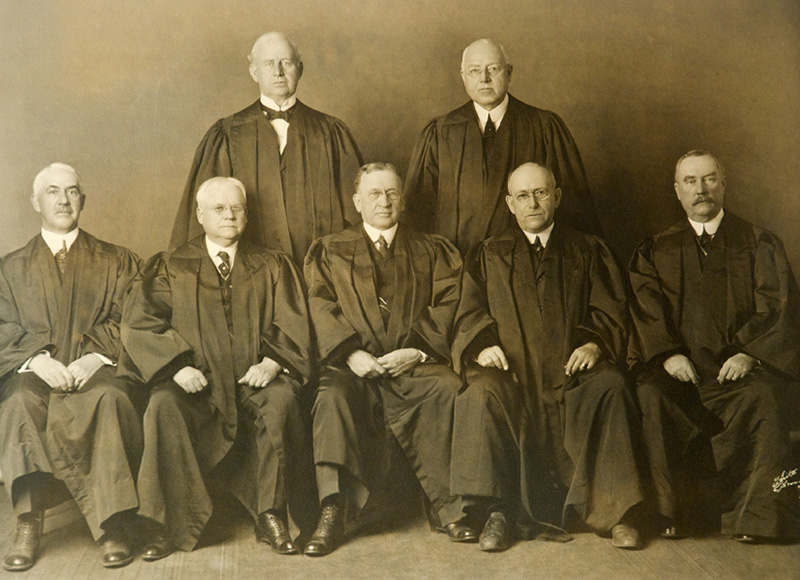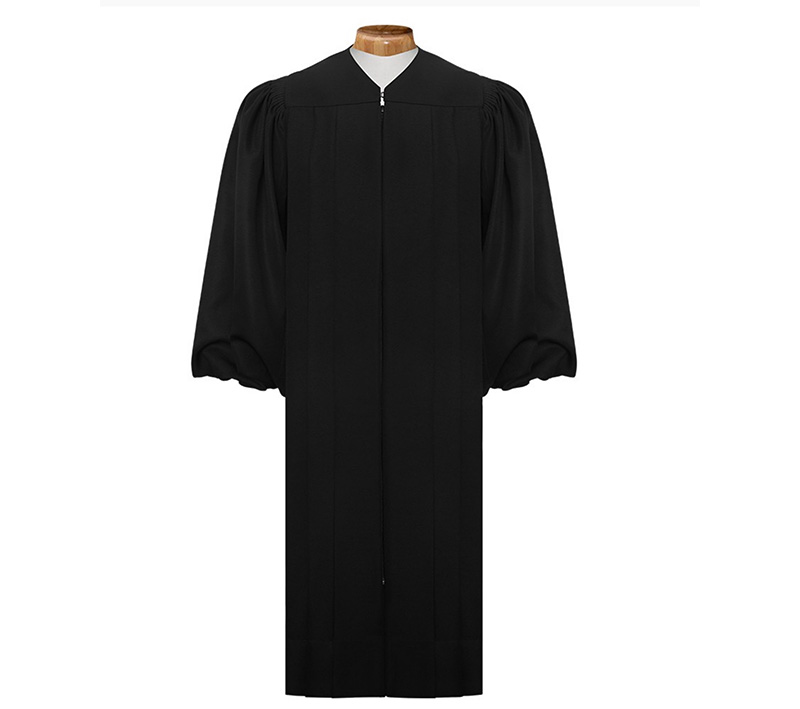
“The judicial power of the United States, shall be vested in one Supreme Court, and in such inferior courts as the Congress may from time to time ordain and establish,” reads the first sentence of Article III of the United States Constitution that establishes and empowers the judicial branch of the government.
In this nation of laws, judges uphold and interpret the Constitution. The process of judicial review is executed by various courts on different levels of authority, from “inferior” to Supreme. There will soon be a shift in the Supreme body but presumably not in what members of that body wear on their own bodies. So, let’s examine how judges dress and how the design of court wear has evolved.
In colonial times, judges and practicing lawyers closely followed the British courts of the 18th century; they wore white powdered wigs and black robes in the lower courts, while the high court, judges wore red robes with black markings. The practice ended in the United States in the mid-nineteenth century while it continues in the English system.
Today, judges on state and federal benches are allowed to choose their preferred courtroom attire, although it is recommended that some kind of robe is worn during official proceedings. The most common is the familiar black robe which covers the arms, torso and legs. Female judges will sometimes wear a lace white collar to distinguish gender. Standard issue robes come with the job, however, they are required to pay for customized “court wear.”

Until Chief Justice John Marshall (who served from 1801 to 1835) took to the bench, Supreme Court justices wore red robes with ermine trim and full wigs. Marshall began the modest habit of wearing only a black silk robe. Wigs were shed altogether. In 1994, Chief Justice William Rehnquist designed his own robe with four gold bars added to his puffy sleeves. His successor, the chief current Justice Roberts returned to the unadorned “republican” black robe.
A few Supreme Court justices (including Thomas, Scalia, Breyer) also wear black skullcaps outdoors to keep their balding heads warm.

What you may not know, is that there is a big business in court wear. In the United States the company named Judge Wear: Bespoke Judicial Tailoring is one such online retailer that supplies “Judge Robes” (from $499.94) and “Judge Accessories” (including the Judicial Garment Bag). “Judge Wear provides court officials and legal professionals with the judicial accessories they need to serve with honor.” Another firm, Murphy Robes, which also sells ecclesiastical supplies to church men and women, guarantees that their judicial customers will “Look distinguished on the bench with comfortable, durable, and functional judicial attire. Choose from our Qwick-Ship® line or custom made just for you.” And Sheehan’s, also known for its “church goods” carry judicial robes. Including those for women (starting at $200). “Comfortable, yet distinctive traditional robe appearance, concealed front opening zipper, two pocket slits with open sleeves. These great robes are carefully tailored with your comfort and appearance in mind which makes them easy to wear. The deep black fabrics are colorfast and completely washable, it can be done at home. They are made easy to care. Comparing the prices, these robes are affordable.”
Judges have to look the part to be the arbiters of conflict and interpreters of law. A case can be made for design playing an important role in juris prudence on the bench.

